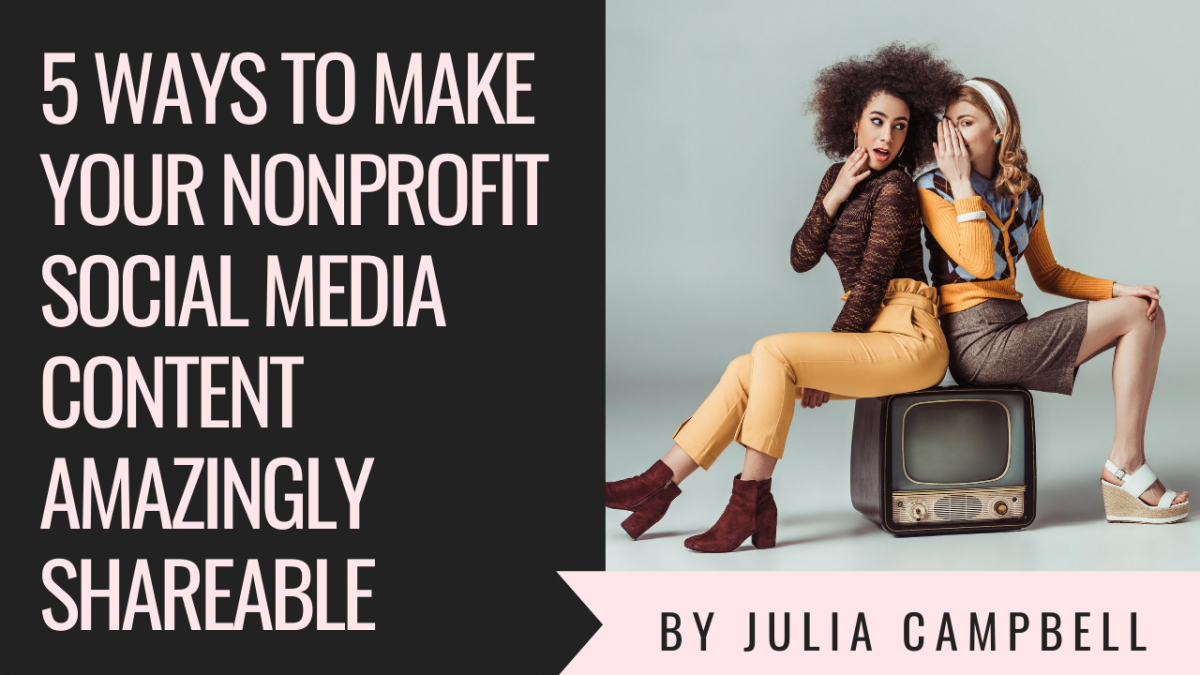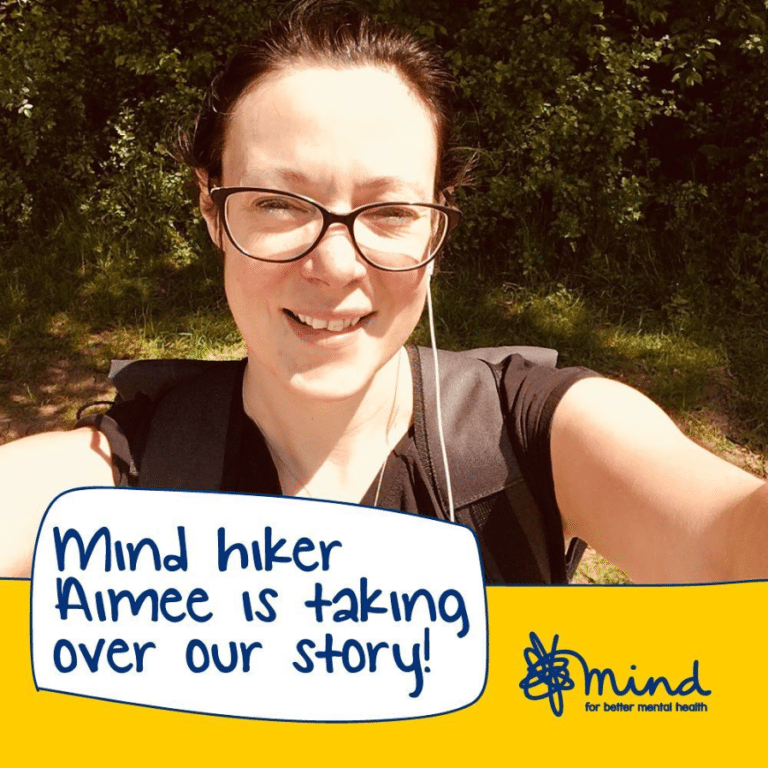Social Media for Social Good Academy 2.0 is opening soon! Don’t miss out or lose your spot – get on the Early Interest List by clicking here.
We all know that sharing is the gold standard of nonprofit social media.
Likes and comments are all well and good, but getting someone to share, to retweet, to re-pin, to re-Gram – that is what ultimately exposes your content to a wider audience and more potential supporters.
Sharing is more powerful as it requires more engagement than passively scrolling, reading or even clicking “like” on a post.
When a member of your online community shares your content with their network, this gets new eyeballs on your information and hopefully brings more of the right people into the fold.
So how do we get more members of our online communities to share our content?
We have to understand the psychology behind WHY people share content on social media.
To put it bluntly, we share what serves us and makes us look good.
We spread the word when it benefits us, our status, our standing.
We share content that makes us feel good and look good to our networks.
Social psychologist Dr. Sander van der Linden, who studies viral movements like the ALS Ice Bucket Challenge, says the key to creating a viral social movement is the creation of a shared identity between the individual and the cause over time.
How can your social media content help to create this shared identity?
Can you focus on optimism, inspiration, and aspiration?
When you share something on social media, your community should say, both to themselves and in public, “This reflects me and my values, what I believe, what I stand for! I’m so proud to be a part of this!”
This is, in effect, what the most effective and timeless brands do. They create a community, not just a group of customers.
Theodore McManus, the advertising genius who built Cadillac, Dodge, and Chrysler to name a few, thought of a brand as something to be trusted and revered.
He didn’t work with companies that just wanted a quick and easy sale, but ones that wanted long-term loyalty.
He created car brands where the car was transformed from a simple status symbol to an actual part of someone’s identity.
Content that builds this kind of passionate community encourages others to spread the message.
Social media is a perfect representation of a service that incentivizes people to bring in their friends, their family, and their professional networks.
If you are the only person that you know on Facebook, the platform is not any good to you. But if everyone you know is using it, the experience gets exponentially better.
The incentive then becomes to bring more and more people into the fold.
The same should be said for your nonprofit’s online community!
Social Media for Social Good Academy 2.0 is opening soon! Don’t miss out or lose your spot – get on the Early Interest List by clicking here.
5 Ways to Make Your Nonprofit Social Media Content Amazingly Shareable
1) Preach to the choir.
I believe in two ways of communicating – preaching to the choir, and preaching very loudly and consistently to the choir.
The choir is beautiful, when they are all reading from the same piece of music. They believe in the music and the message.
And if they are sufficiently motivated and inspired, they will get others to join in.
The choir is who we need to focus on.
Why are nonprofits so obsessed with getting complete strangers to give us money?
When was the last time you gave to an organization that you were not at least remotely familiar – with the cause, the issue, the organization, and/or to the person asking you to give?
We spend too much time focused on “standing out” and “cutting through the clutter,” just to get our message in front of the wrong audiences – people that will never care about and/or agree with what we stand for.
Preach to the choir, and encourage them to share your message with other like-minded individuals.
You have people in your circle who already know your work, believe in you, and like you.
It’s 10x more effective to convince people to take action if they know something about you. It’s much more expensive, time-consuming, and difficult to convince non-believers to come on board.
Planned Parenthood Action Network creates shareable social media graphics designed with sharing in mind, knowing that their community will be inspired to post them on their accounts.
The Human Rights Campaign (HRC) is another example of how a nonprofit can effectively preach to the choir by truly understanding what will resonate with their specific audience, even while alienating others. They create social media graphics focused on their audience and their community.
2) Let the community participate in building it.
If your online community is an active participant in designing and building the content or the platform, they will be more invested in sharing it and promoting it to others.
The Washington Trails Association created the community-led review site Hike Finder Map (think Yelp for hikers). They wanted to provide a needed service and fill a gap for their target audience, as well as invest in technology that would help them fulfill their mission.
The Hike Finder Map encourages participants to leave reviews and empowers them to protect these wild places. Hikers found this interactive map incredibly useful, but only if they could get a critical mass of people using it. The incentive to share it far and wide was born.
The Montana Wilderness Association wanted to reach more members of hard-to-reach audiences, like young professionals and parents of young children. The organization created Wilderness Walks, a free, open-to-the-public program that showcases the “why” of their mission (protecting wildness) and recruits advocates to spread the word on social media to other like-minded people. The more people who take part, the better the service, the increased reach on social media, and the more Walks they can provide.
3) Host a social media takeover.
A great way to get increased visibility for your social media content is to hand the keys over to a trusted supporter (or two or three).
Social media takeovers, where a member of your online community manages a specific social media account for the day or the week, are becoming low-cost ways for nonprofits to build their audiences and share fresh content.
Instagram takeovers are a hot new trend, especially among higher ed institutions and those who serve younger populations.
UK mental health charity Mind has truly embraced the power and the fun nature of Instagram Stories by allowing their supporters to occasionally take over the account and post their own content as they undertake a fundraising challenge.
.
Social Media for Social Good Academy 2.0 is opening soon! Don’t miss out or lose your spot – get on the Early Interest List by clicking here.
4) Learn what’s most shareable on social and copy it.
Conduct research on the latest trends in social media and adapt them for your nonprofit.
Popular content types like memes and GIFs are imminently shareable, because they are entertaining, humorous, and make people smile.
Inspirational quotes from famous authors, politicians, and celebrities are shared widely on social media.
You can look to the web to find them, or create your own using low-cost design tools like the WordSwag mobile app or Canva.com/nonprofits.
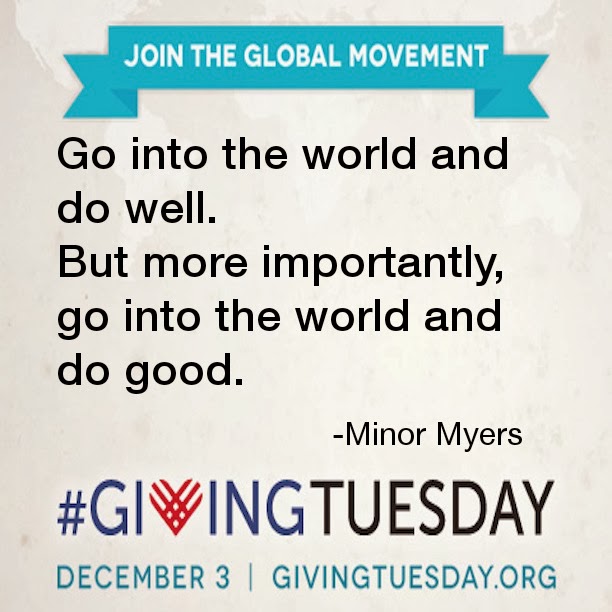
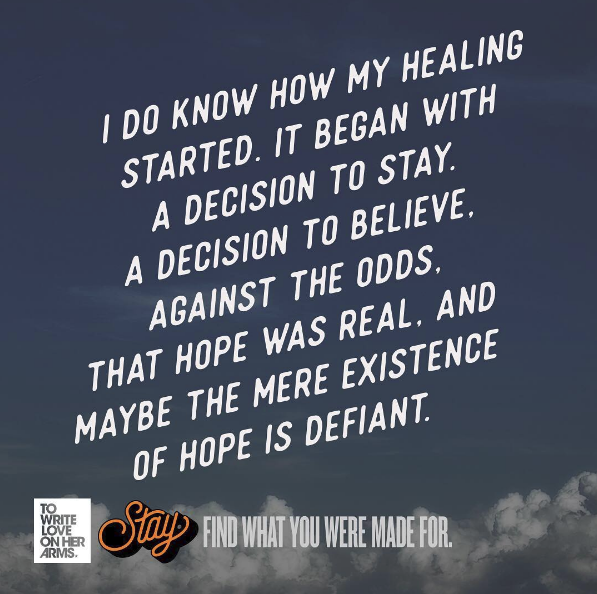
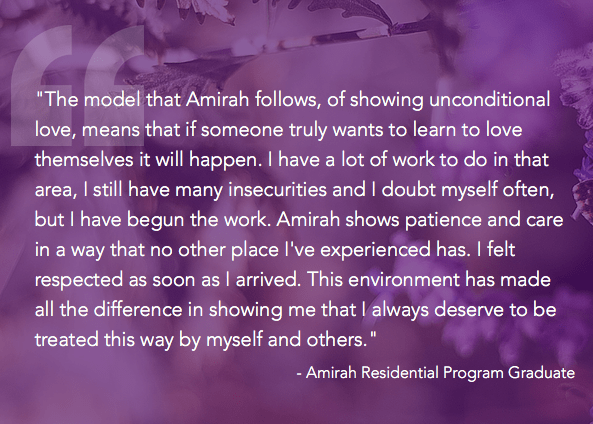
Memes are taking the internet by storm. A meme shows an image, video or text that has been altered—often in a humorous or creative way—and spread rapidly by internet users.
You can use free sites like Meme Generator, Imgflip, or Make A Meme to create and adapt your own.
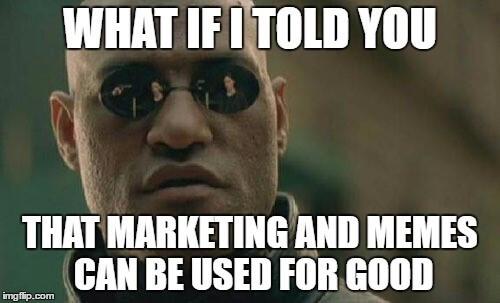
5) Give your audience quick wins.
Behavioral science teaches us that small actions taken on behalf of an organization or brand make us more likely to say yes to the next ask.
Provide your audience with small, quick wins that will help them immediately see the results of participation on your social media platforms, and you will start to build a deeper relationship with them.
Use the example of the wildly popular smartphone game Angry Birds – the company intentionally makes the first level so easy so that players get a quick win, and become hooked.
Your nonprofit may be running low on dish soap or paper towels and you have a large program tonight or a big support group meeting – let people know on social media.
People love the instant gratification of satisfying an immediate need, and if they are already at the grocery store and see your tweet or Facebook post, they may be inclined to purchase items in the moment.
Naperville Area Humane Society in Illinois was running out of kitty litter one day at their no-kill animal shelter, so they tweeted about it.
The community responded in an overwhelming way. To this day, they still receive bags of kitty litter, which they can stockpile or give away to families who adopt the cats they house.
Other examples of social media quick wins:
- Homeless shelters can post on Facebook that they need travel items to make Welcome packages for people in the shelter.
- Food banks can tweet about immediate needs of perishable items.
- After-school programs can ask for school supplies, office supplies, arts and crafts supplies.
- Child care centers can tweet to ask for donations of gently-used toys or other necessary items.
Your homework assignment: Write down at least one way that you can encourage your audience to share your nonprofit’s content on social media!
Start collecting and sharing your best stories!

